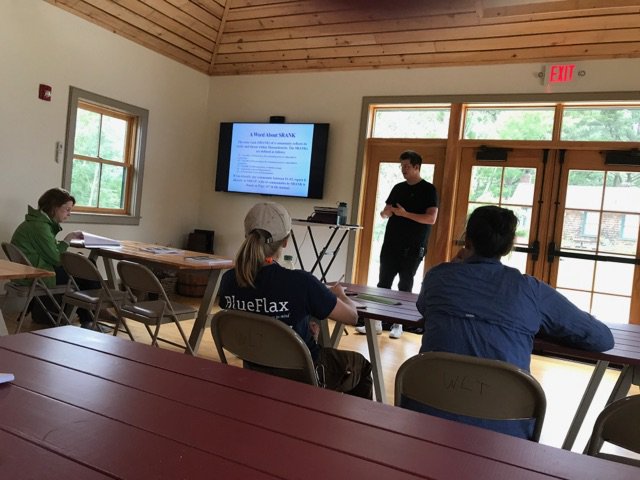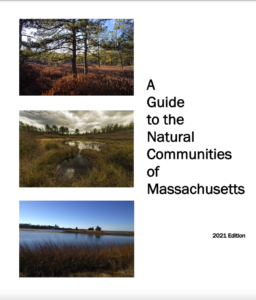What is a Natural Community?
A natural community is identified by the Natural Heritage and Endangered Species Program (NHESP) as "assemblages of species that recur together in particular environmental conditions." Natural communities are defined by their hydrology, physical structure, characteristic species, and other environmental factors. They are named on the basis of their dominant species. For example, one commonly found in Southeastern Massachusetts is a Pitch Pine-Scrub Oak Community.
Why Identify Natural Communities?
- Raises awareness of the distribution of plants and animals, both rare and common, in a specific area
- Helps determine where management or stewardship is needed
- Creates a common terminology for easier communication between ecologists, land managers, and others
- Familiarizes decision-makers with characteristic plants and plant communities in their local area, a requirement for Open Space and Recreation Plans in Massachustts (4.D.1).
Natural Communities Identification for Dummies
To easily identify natural communities in Massachusetts use SEMPBA's update of the Manomet Center for Conservation Sciences Regional Conservation Planning Program Guide of 2006:
A Guide to the Natural Communities of Massachusetts 2021 View or download here.
Identification, Assessment, and Mapping Training
SEMPBA offers training on the identification of natural communities free of charge to conservation groups in Southeastern Massachusetts. Our TerraCorps members have developed educational materials tailored to different audiences including students, decision-makers, and non-scientists. If you are interested in the natural communities training, please contact Sharl at sharl@pinebarrensalliance.org

